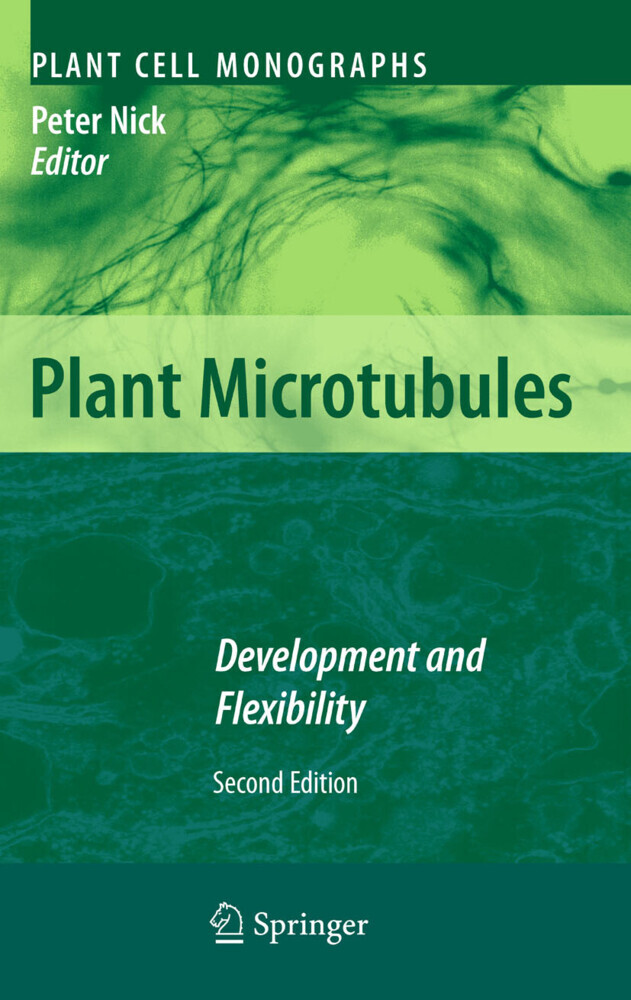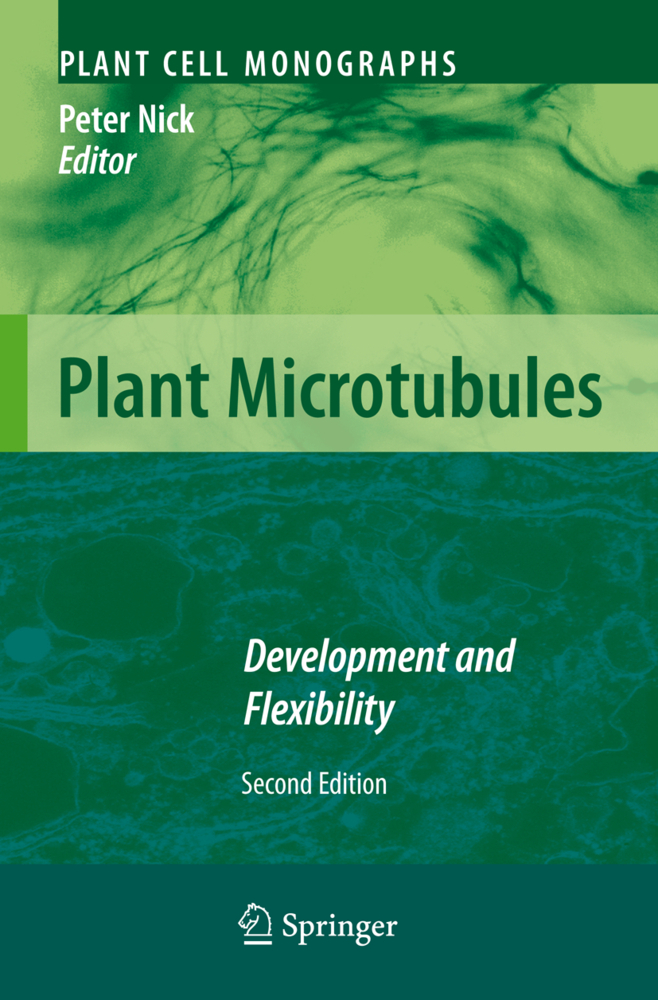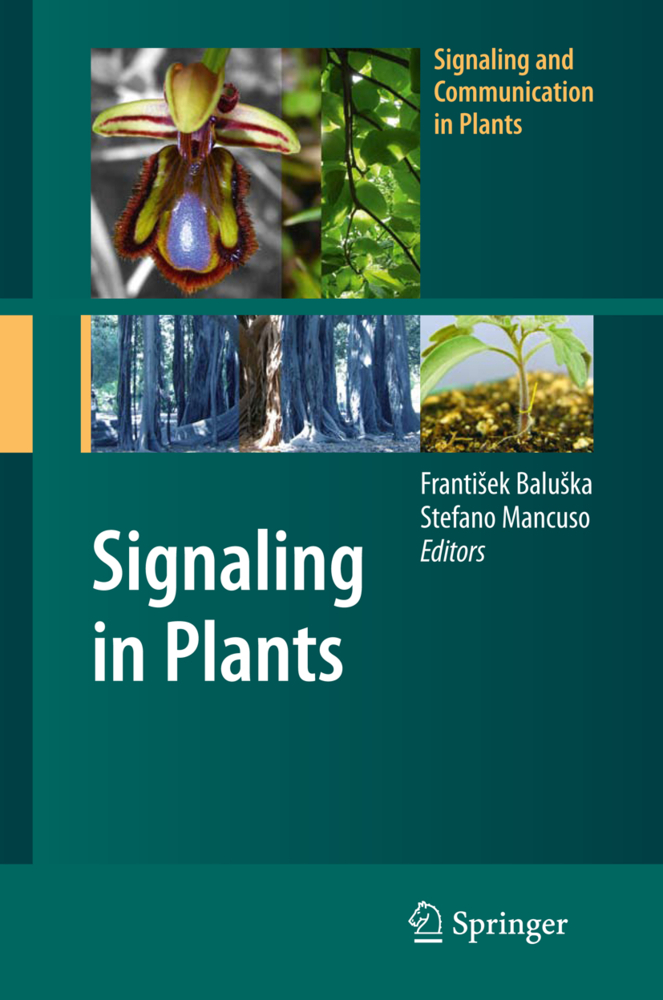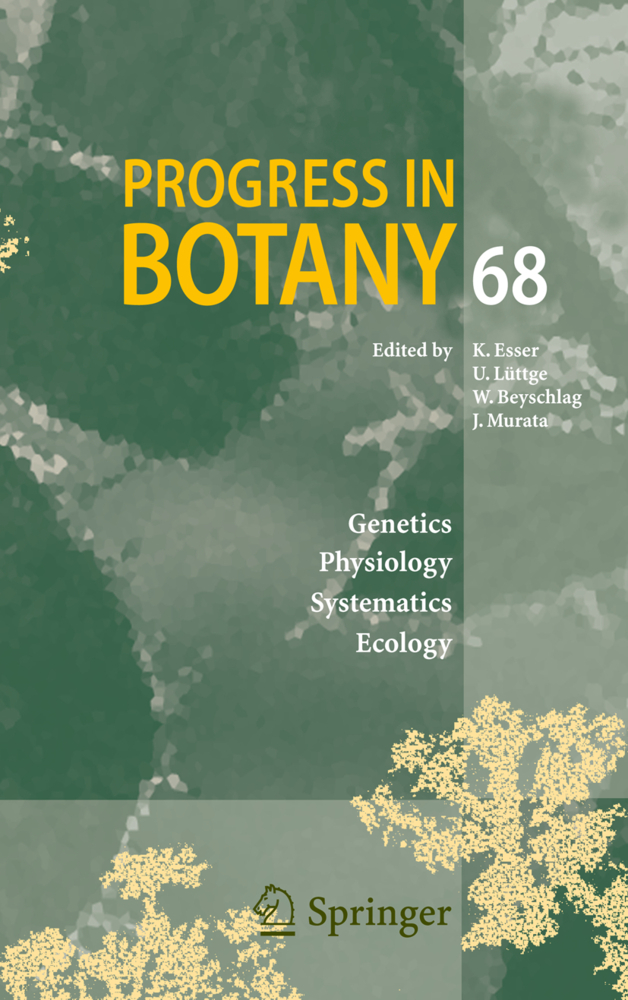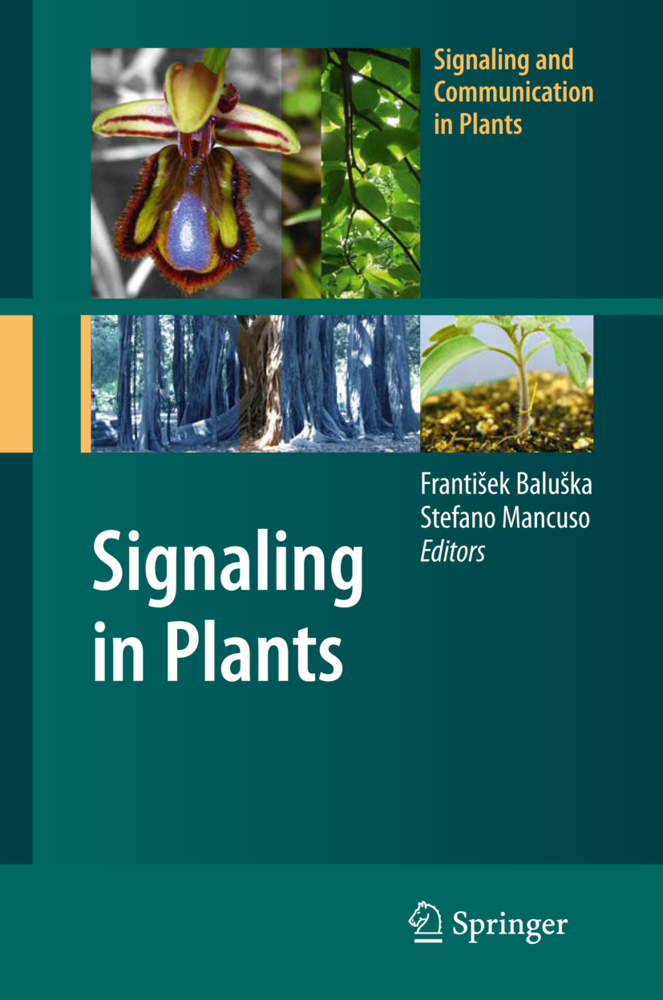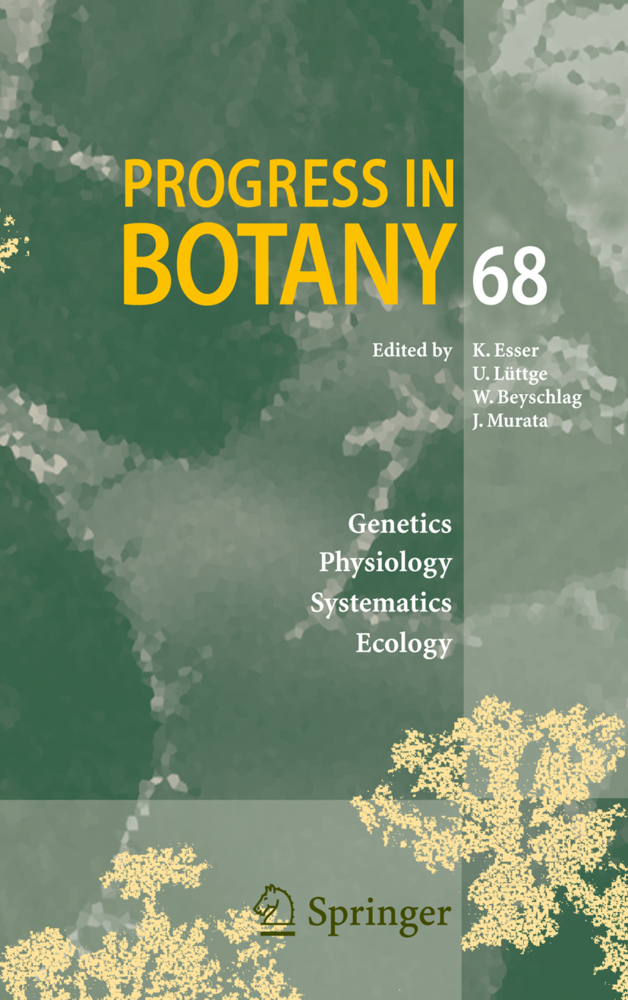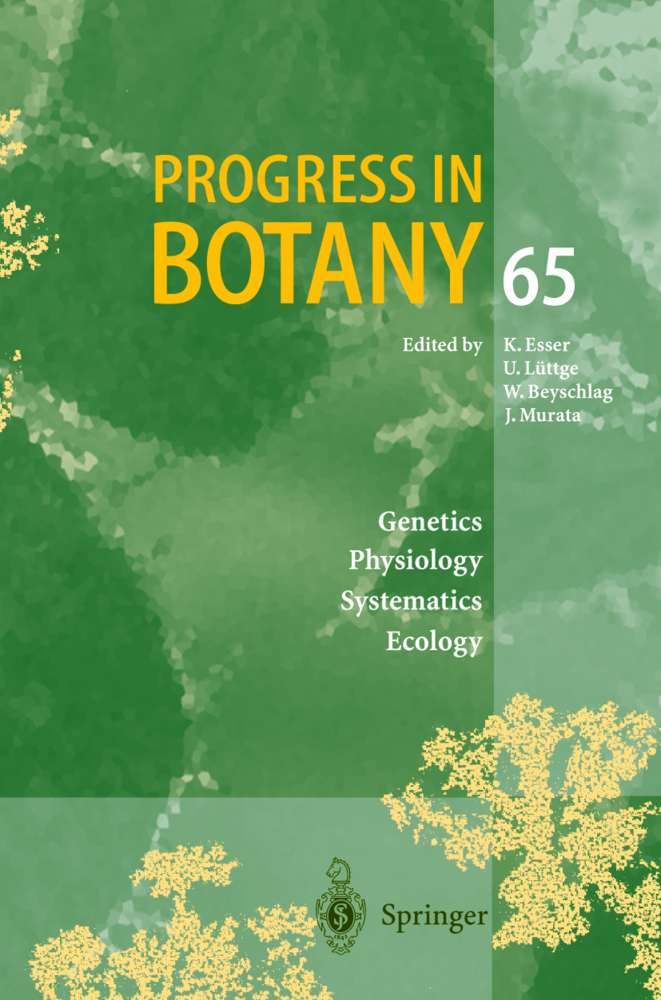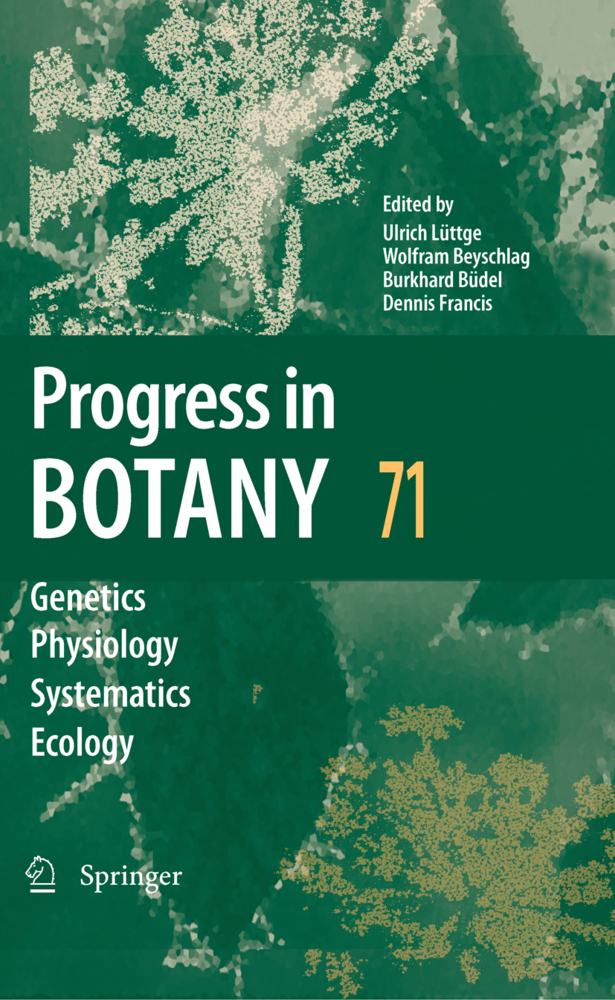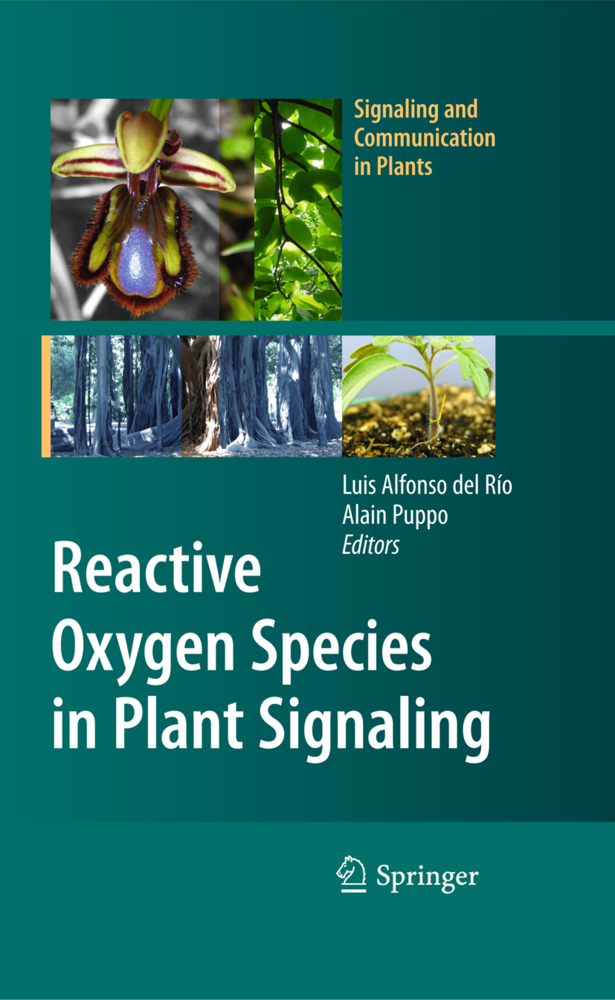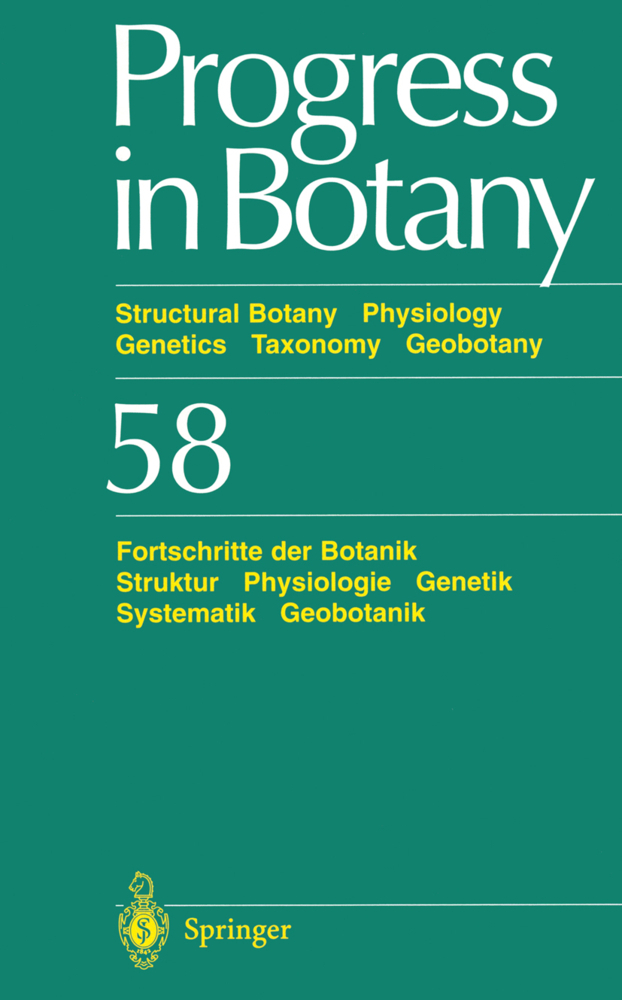Plant Microtubules
Development and Flexibility
Plant microtubules are key elements of cell growth, division and morphogenesis. In addition to their role in plant development and architecture, they have emerged as regulatory elements of signalling and important targets of evolution.
Since the publication of the first edition of Plant Microtubules in 2000, our understanding of microtubules and their manifold functions have advanced substantially. Consisting of the following three parts, this book highlights the morphogenetic potential of plant microtubules from three general viewpoints:
Microtubules and Morphogenesis: control of cell axis during division and expansion, cross-talk with actin filaments, mechanical properties of the cell wall.
Microtubules and Environment: the role of microtubules during the sensing or response of environmental factors such as pathogens or abiotic stresses.
Microtubules and Evolution: complexity and specialization of plant microtubules in the context of plant evolution.
For those working in academia and applied science, the state of the art of a fascinating field of cell biology is given; for graduate and advanced students the most recent advances are positioned into a clear conceptual context.
From the reviews of the first edition"The overall impression on this book is a very good sum of knowledge gathered around plant microtubules. ... The readability is very good and the overall scientific level at which the co-ordinated Authors have written their contribution is good to excellent." (Annals of Forest Sciences)"... a compact book, easy to handle with an excellent subject index. Illustrations and schematic models are highly instructive. ... It is highly recommendable." (Plant Science)
Since the publication of the first edition of Plant Microtubules in 2000, our understanding of microtubules and their manifold functions have advanced substantially. Consisting of the following three parts, this book highlights the morphogenetic potential of plant microtubules from three general viewpoints:
Microtubules and Morphogenesis: control of cell axis during division and expansion, cross-talk with actin filaments, mechanical properties of the cell wall.
Microtubules and Environment: the role of microtubules during the sensing or response of environmental factors such as pathogens or abiotic stresses.
Microtubules and Evolution: complexity and specialization of plant microtubules in the context of plant evolution.
For those working in academia and applied science, the state of the art of a fascinating field of cell biology is given; for graduate and advanced students the most recent advances are positioned into a clear conceptual context.
From the reviews of the first edition"The overall impression on this book is a very good sum of knowledge gathered around plant microtubules. ... The readability is very good and the overall scientific level at which the co-ordinated Authors have written their contribution is good to excellent." (Annals of Forest Sciences)"... a compact book, easy to handle with an excellent subject index. Illustrations and schematic models are highly instructive. ... It is highly recommendable." (Plant Science)
1;Contents;13 2;Part A Microtubules and Morphogenesis;14 2.1;Control of Cell Axis;15 2.1.1;1 Cell Axis and Plant Development;15 2.1.2;2 Control of Cell Division;19 2.1.3;3 Control of Cell Expansion;27 2.1.4;4 Signal-Triggered Reorientation of Microtubules;35 2.1.5;5 How Do Microtubules Change Direction?;39 2.1.6;6 Mechanisms for the Control of Cell Axis;45 2.2;Crossed-Wires: Interactions and Cross-Talk Between theMicrotubule andMicrofilament Networks in Plants;59 2.2.1;1 Microfilament Organization, Function, and Colocalization with Microtubules;60 2.2.2;2 Evidence for Microtubule-Microfilament Cross-Talk;65 2.2.3;3 Proteins That Might Mediate Direct Microtubule-Microfilament Interactions;70 2.2.4;4 Microtubules and Microfilament-Based Cytoplasmic Streaming;76 2.2.5;5 Rop-Based Signalling to Both Microtubules and Microfilaments;79 2.2.6;6 Conclusions;82 3;Part B Microtubules and Environment;92 3.1;Microtubules and the Control ofWood Formation;93 3.1.1;1 Significance of Cell-wall Texture for Wood Quality;93 3.1.2;2 Cellular Mechanisms of Wood Formation;94 3.1.3;3 The Interaction of Cortical Microtubules and Cellulose Microfibrils in the Primary Wall;98 3.1.4;4 The Interaction of Cortical Microtubules and Cellulose Microfibrils in the Secondary Wall;104 3.1.5;5 The Influence of Cortical Microtubules on Heterogeneous Cell Wall Structure;112 3.1.6;6 Potential Approaches to the Control of Cell-wall Texture;118 3.2;Microtubules and Pathogen Defence;130 3.2.1;1 Dynamic Reorganization of the Cytoskeleton During Pathogen Attack;130 3.2.2;2 Possible Roles of the Cytoskeleton in Pathogen Defence;132 3.2.3;3 The Cytoskeleton as a Possible Target of Pathogenicity and Symbiosis;138 3.2.4;4 Prospects - Potential of the Cytoskeleton for Molecular Breeding of Pathogen-Resistant Plants;141 3.3;Microtubules and Viral Movement;150 3.3.1;1 Introduction;150 3.3.2;2 Studies to Localize the MP in Infected Cells;151 3.3.3;3 Role of MT in Other RNA and Viral Transport Systems;169 3.3.4;4 Concluding Remarks;171 3.4;Microtubules as Sensors for Abiotic Stimuli;183 3.4.1;1 Microtubules as Sensors: Physiological Mechanisms;183 3.4.2;2 Microtubules as Sensors: Molecular Mechanisms;186 3.4.3;3 Plant Microtubules as Mechanosensors;189 3.4.4;4 Plant Microtubules as Gravisensors;192 3.4.5;5 Microtubules as Thermometers;197 3.4.6;6 Outlook;202 4;Part C Microtubules and Evolution;212 4.1;Plant Tubulin Genes: Regulatory and Evolutionary Aspects;213 4.1.1;1 All Aboard - Tubulin Genes at the Nuclear Station;213 4.1.2;2 Next: Post-Transcriptional and Post-Translational Check Points;218 4.1.3;3 Tubulin Isotypes and Stochiometry;221 4.1.4;4 Microtubule Construction: MAPs and Deviant Tubulins;226 4.1.5;5 Concluding Remarks: Novel Approaches and Open Questions;230 4.2;Microtubules and the Evolution of Mitosis;239 4.2.1;1 The Cytoskeleton as Target of Evolution;240 4.2.2;2 The Starting Point - Prokaryotic Mitosis;243 4.2.3;3 Mitosis in Lower Eukaryotes;246 4.2.4;4 Milestones Towards Acentriolar Plant Mitosis;255 4.2.5;5 Evolutionary Footprints 1: Division of Plastids and Mitochondria;262 4.2.6;6 Evolutionary Footprints 2: The Plant Nucleus Revisited;264 5;Subject Index;273
Nick, Peter
| ISBN | 9783540771784 |
|---|---|
| Artikelnummer | 9783540771784 |
| Medientyp | E-Book - PDF |
| Auflage | 2. Aufl. |
| Copyrightjahr | 2008 |
| Verlag | Springer-Verlag |
| Umfang | 269 Seiten |
| Sprache | Englisch |
| Kopierschutz | Digitales Wasserzeichen |

